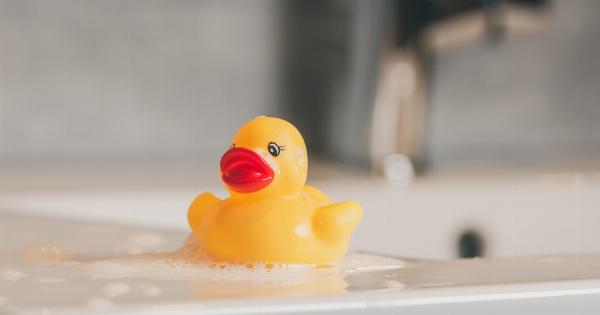Many parents buy plastic games for their children to play with during bath time. However, these cute toys can pose a danger to children in the bathroom.
This article will explain why plastic games in the bathroom should be avoided, and alternatives that parents can try.
Drowning Hazard
The biggest danger that plastic games in the bathroom pose is that they can cause drowning. While they might seem harmless, these toys can trap a child’s face or mouth, making it difficult for them to breathe.
Additionally, most children’s toys are not designed to withstand large amounts of water pressure or force, and they may break or fall apart during use. If a child tries to play with a broken toy in the water, they could accidentally swallow a piece, which can be very dangerous.
Mold and Bacteria Growth
Another risk associated with plastic games in the bathroom is that they can quickly become covered in mold and bacteria. Warm, humid conditions in the bathroom are a breeding ground for germs, and plastic toys easily accumulate these contaminants.
Children put these toys in their mouths and play with them, which can transmit germs to them. Additionally, mold growing on the toys could cause respiratory problems or skin irritation if a child has an allergy to it. Even regular cleaning of these toys may not be enough to prevent germs and mold from accumulating.
Chemical Leaching
Many plastic toys have been found to contain harmful chemicals that can leach into the water during use. These chemicals can cause health problems ranging from minor skin irritations to cancer.
Phthalates, bisphenol A (BPA), and polyvinyl chloride (PVC) are examples of chemicals commonly found in plastic goods that can be harmful to children when ingested. It’s best to steer clear of toys made from these materials altogether, so parents must read the labels carefully and choose toys that are free from these substances.
Alternatives
When it comes to bath time, there are options besides plastic toys. One good alternative is to use simple, basic rubber ducks, which have no small parts or chemicals. They are entirely safe until the child is ready for a more complicated toy.
Foam letters and numbers that adhere to the tub wall can be fun alternatives that can also aid in teaching basic math and reading skills. Some rubber toys come with no holes and are dishwasher-safe, enabling parents to deep clean them.
Conclusion
Plastic games for children in the bathroom may seem harmless, but they can be dangerous. Their small parts may pose a choking hazard, and they can lead to drowning.
They can also grow mold and bacteria which may cause allergic reactions, respiratory problems, or skin irritations. Parents have to consider the use of safer alternatives like basic rubber ducks and foam toys. These toys are free from harmful chemicals and ensure a safe and fun bath time.































